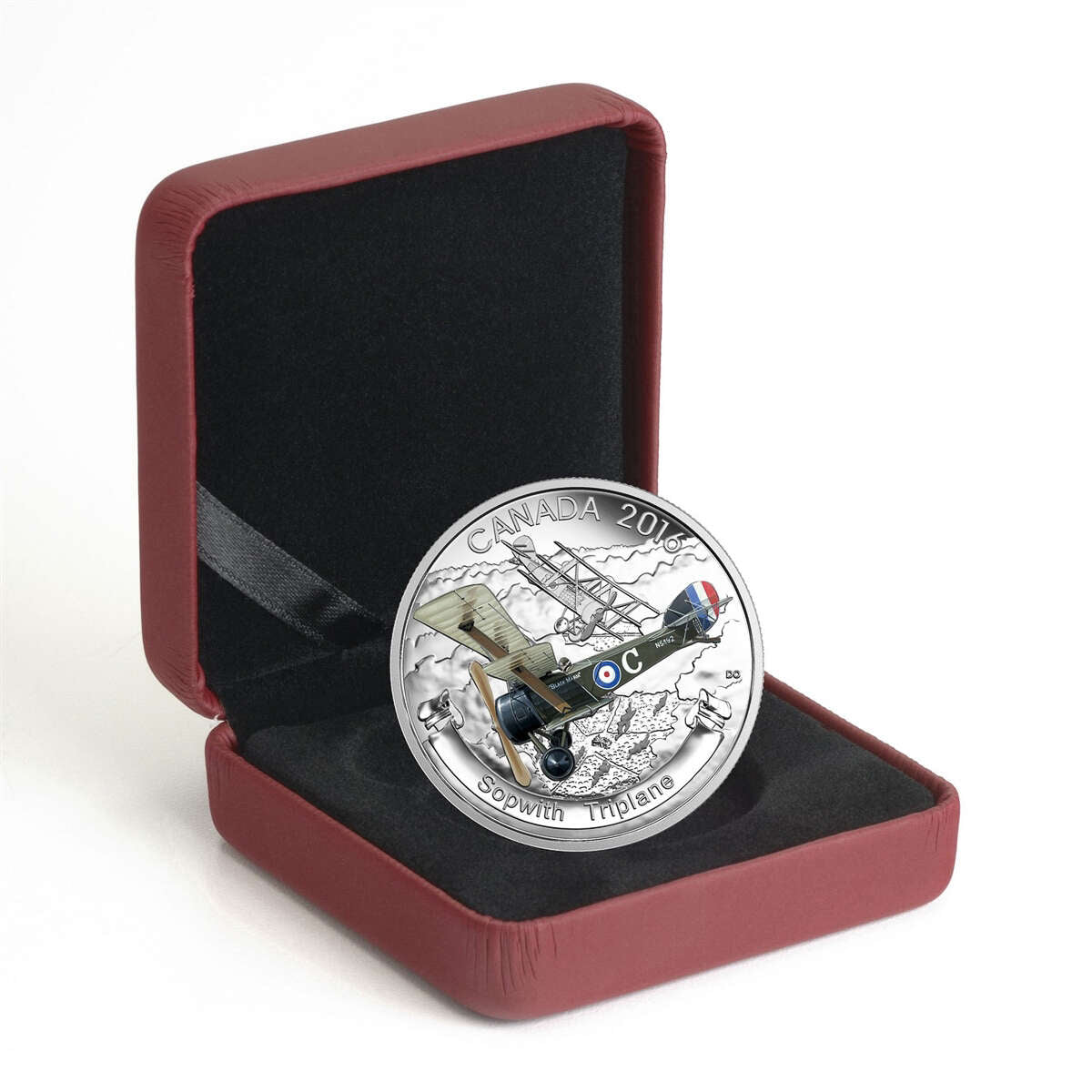Description
This 2016 $20 fine silver coin is the second coin in the Aircraft of the First World War Series. The coin artistically creates a striking contrast using a near flawless proof finish and selective colour. The coin honors the role the aerobatic Sopwith Triplane played in reshaping warfare and redefining industry and transportation. The coin weighs just over one ounce of pure silver, and has a limited mintage of 7,500 coins. As a pure silver coin struck by the Royal Canadian Mint, this item is HST/GST exempt.
The Design:
The design by Canadian artist David A. Oram features an engraved depiction of two Sopwith Triplanes flying above the Messines Ridge in June 1917. Selective colour recreates the distinctive appearance of the Black Maria flown by Flight Lieutenant Raymond Collishaw, as it completes a sharp turn. The Black Maria’s markings, wing construction and the Vickers machine gun are in view, with the Black Roger to the rear. The devastation of Ypres can be seen through the parted clouds, where the ruins of the church at Passchendaele and the blast scarred fields.
The coin is engraved with the word "CANADA," the date "1916" and the words "Sopwith Triplane". The back design has the denomination “20 Dollars” and features an effigy of King George V, by Sir Edward B. MacKennal, as used on Canadian coins in the First World War period.
The Sopwith Triplane:
The Triplane was famously flown by No. 10 Navel Squadron “B” flight, better known as “Black flight”, this all Canadian flight was commanded by the ace (a term given to pilots with 5 aerial victories) Raymond Collishaw. Their aircraft, named Black Maria, Black Prince, Black George, Black Death and Black Sheep, could be distinguished by their engine cowling, wheel disc covers and metal forward fuselage decking painted black with the names on the sides of the plane in white lettering. The Triplane's combat debut was highly successful. The new fighter's exceptional rate of climb, faster roll rate, maximum view, and excellent maneuverability and high service ceiling gave it a marked advantage over the biplane. Black flight claimed 87 German aircraft in three months while equipped with the triplane.





